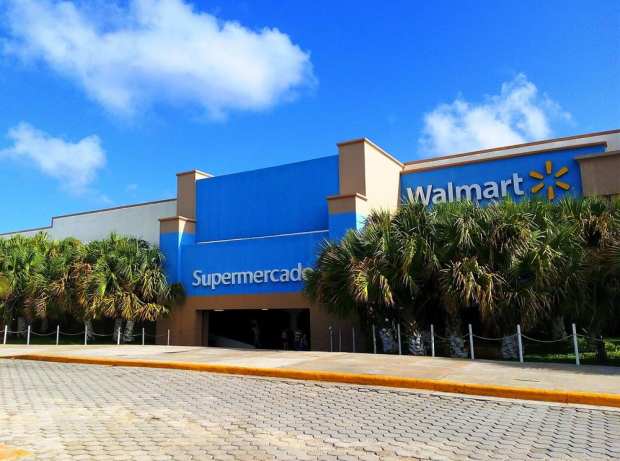Retail Pulse: Walmart Tests ‘Great Workplace,’ Sainsbury’s Opens Cashierless Store

Brick-and-mortar retailers are changing the way they manage their workforces in the age of Amazon: Walmart, for instance, is testing multiple versions of a new team structure called the “Great Workplace” in some of its locations. The move comes the company is investing in refurbishing stores, rolling out faster shipping for eCommerce orders and offering store pickup as well as online grocery delivery.
The company is testing its workplace program at mainly smaller supercenters along with the company’s Neighborhood Markets. Through the effort, the retailer is reportedly asking department managers as well as assistant store managers to apply for positions centered on managing teams. The changes are said to provide good managers with “elevated” positions, according to The Wall Street Journal, and give workers on the floor greater power to make decisions.
In one case, workers at pilot locations can assist shoppers by changing a price or returning products while forgoing multiple authorizations. Workers are also organized into teams that finish tasks across shifts and communicate. Walmart U.S. Senior Vice President of Associate Experience Drew Holler said, according to the outlet, “That is probably the game-changer in this, we are pushing decisions down.” The paper also reported that the impetus of the move wasn’t cost savings, but meeting changing online shopping habits as well as staff demands. (Walmart is also reportedly looking to use the structure to maintain the happiness of its teams and decrease turnover.)
Walmart has made other recent efforts to keep physical retail relevant in the eCommerce age: News surfaced in April that the company plans to revamp 500 of its brick-and-mortar stores in the U.S. The changes were to reportedly encompass brighter lighting, wider aisles and self-checkouts. When it comes to individual states, the company plans a $173 million investment for Florida, a $145 million investment for California and a $265 million investment for Texas per reports last month. At the same time, it was reported that Walmart plans to employ $11 billion in capital expenditures this year.
The retailer is hardly the only company to boost investments in revamping stores: Last year, Target made investments valued at $2.7 billion for its stores in comparison to $1.63 billion in the year prior. GlobalData Retail Managing Director Neil Saunders said, according to the reports in April, “All retailers are under pressure to do it, although whether and how much they’re doing it is very variable. Walmart is not doing massive refurbishments with major changes. It really is a refresh, to make the store experience a lot more pleasant.”
In terms of Walmart’s other efforts, the retailer is also focusing on features such as grocery pickup. The company announced in September that it was offering grocery delivery in 50 metro areas across the United States. At the same time, it was reported that the retailer was starting to receive orders at its 2,000th grocery pickup location in Fayetteville, Arkansas. And, in October, the retailer said that it was working with marketplace sellers to enable free two-day shipping on millions of products in the eCommerce age.
In Other Brick-And-Mortar News
7-Eleven is rolling out delivery for beer and cider in some U.S. markets. To place an order, shoppers can tap into the 7Now app. In a statement, the company revealed that a section of the app called “The Beer Necessities” will offer “everything from traditional beers to craft beers and ciders” per reports. The company is reportedly testing the offering in 18 markets, including Los Angeles, San Diego, San Francisco, St. Louis, Tampa and New York.
The beers and drinks available for delivery encompass Corona, Coors Light, Angry Orchard, Dos Equis, Modelo, Stella Artois, Dogfish Head, New Belgium Fat Tire Amber Ale, Blue Moon, Brooklyn Defender, and New Belgium Voodoo Ranger. As it stands, the convenience store company has worked to make shopping easier for its customers. The company rolled out scan-and-go options for customers in 14 stores late last year.
On another note, Dunkin’ Brands reported first-quarter results that beat analysts’ top-line and bottom-line earnings estimates. The quick-service restaurant (QSR) chain reported revenues of $319 million and earnings per share of 63 cents compared to $312.5 million and 62 cents. In the company’s earnings conference call on Thursday (May 2), Dunkin’ Brands CEO Dave Hoffmann said that the company secured the perpetual license last year to the code that runs the Dunkin’ mobile app.
Hoffmann also noted that on-the-go ordering saw an average weekly sales increase of 25 percent year over year (YOY), which made up 4 percent of total transactions in the quarter. The executive also pointed out that mobile orders exceeded 25 percent of transactions in many urban areas at high-volume sites. Hoffman said, “On-the-go mobile ordering is a winning proposition for Dunkin’.” He added that the offering allows customers to get in, get out and be on their way.
And in the United Kingdom, supermarket company Sainsbury’s has opened a checkout-free store in London. At the location, consumers can tap into a smartphone app when they shop at the store. Shoppers can scan their selections, make payments through an app and scan a quick-response (QR) code to confirm their payments. While the tills and checkout area of the store had been reportedly removed, a help desk was created to assist consumers who want to make payments by cash or card.
Sainsbury’s Group Chief Digital Officer Clodagh Moriarty said, according to reports, “This is an experiment rather than a new format for us — it hasn’t been done in the U.K. before, and we’re really excited to understand how our customers respond to the app experience.” Moriarty continued, “We’ll be with our customers and colleagues all the way over the coming months, iterating continuously based on their feedback before we decide if, how and where we make this experience more widely available.”
To keep tabs on the latest retail trends, check next week’s Retail Pulse.
